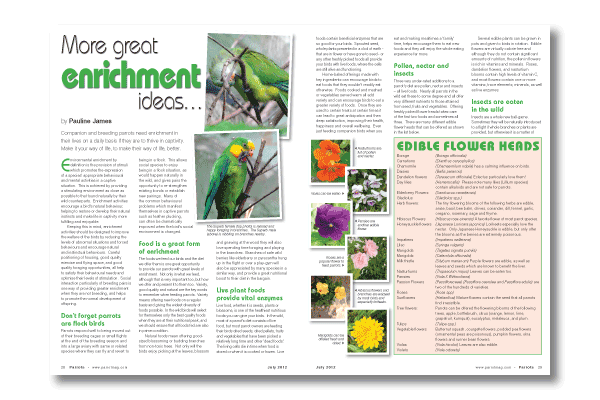by Pauline James
Companion and breeding parrots need enrichment in their lives on a daily basis if they are to thrive in captivity. Make it your way of life, to make their way of life, better.
Environmental enrichment by definition is the provision of stimuli which promotes the expression of a species’ appropriate behavioural and mental activities in a captive situation. This is achieved by providing a stimulating environment as close as possible to that found naturally by their wild counterparts. Enrichment activities encourage a bird’s natural behaviour, helping to restore or develop their natural instincts and make life in captivity more fulfilling and enjoyable.
Keeping this in mind, enrichment activities should be designed to improve the welfare of the birds by reducing the levels of abnormal situations and forced behaviours and encourage natural and instinctual behaviours. Careful positioning of housing, good quality exercise and flying space, and good quality foraging opportunities, all help to satisfy their behavioural needs and optimise their levels of stimulation. Social interaction particularly of breeding pairs is one way of providing greater enrichment when they are not breeding, and helps to promote the normal development of offspring.
Read more in the magazine…









Parrot Chat
Buyers Guides
Breeding articles